Museums, Theaters, Architecture, Paralimni

Removed from Unnamed collection
A folklore museum 
A folklore museum is also of interest to tourists. It is located in an old house and is an example of a Cypriot home and everyday life. https://www.kiprinform.com/en/villages_of_cyprus/paralimni-2/
Map
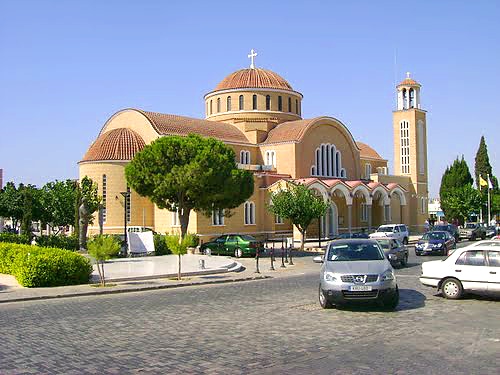
Removed from Unnamed collection
Saint Georgios Churches 
Two of churches were consecrated in honour of Saint George. Оne of them was built in the 19th cеntury, whilst the other, more modern one, was built in 1965. https://www.kiprinform.com/en/villages_of_cyprus/paralimni-2/
Map
Explore more places related to this search:

Removed from Unnamed collection
Lala Mustafa Pasa Mosque 
The cathedral of St. Nicholas / Lala Mustafa Pasha Mosque is the largest medieval building in Famagusta and was commenced in 1300 AD. It must be noted that the great cathedrals of the Middle Ages often took more than 100 years to complete, so was St. Nicholas was completed about 1400. http://www.cypnet.co.uk/ncyprus/city/famagusta/lala/index.html
Map

Removed from Unnamed collection
Saint Barnabas Monastery & Museum 
The Monastery of St. Barnabas is at the opposite side of the Salamis-Famagusta road, by the Royal Tombs. You can easily tell it by its two fairly large domes. It was built to commemorate the foremost saint of Cyprus, whose life was so intertwined with the spread of the Christian message in the years immediately following the death of Christ. http://www.cypnet.co.uk/ncyprus/city/famagusta/stbarnabas/index.html
Map

Removed from Unnamed collection
Agios Lazaros Byzantine Museum 
The Byzantine Museum at the church of Agios Lazaros (Saint Lazarus) is housed in some of the cells of the hypostyle porch that still stand to its south. The museum’s exhibits include important religious icons, artefacts and relics, including Byzantine icons, gospels, crosses and other ecclesiastical treasures from the whole district of Larnaka. http://larnakaregion.com/directory/product/ecclesiastical-museum-of-st-lazarus
Map

Removed from Unnamed collection
Hala Sultan Tekke Mosque 
This historic mosque is located 3km west of Larnaka on the road to Kiti, on the main Salt Lake. After the Arab armies successfully landed in Larnaka in 648AD, the Holy Helper and aunt of Mohamed - Umm Haram - died at the site when she fell off her mule. http://larnakaregion.com/directory/product/hala-sultan-tekke-mosque
Map
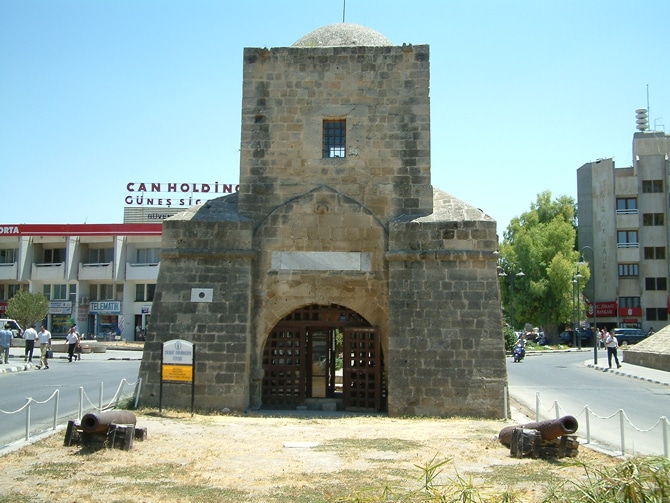
Removed from Unnamed collection
Kyrenia Gate 
The Kyrenia Gate in the North Cyprus is one of the three gates on the walls surrounding the old city of Nicosia. This gate was one of the most important entry-exit points of the city. It is also known as the "Del Providetore Gate" after the architecture Proveditore Francesco Barbaro. http://www.northcyprusonline.com/North-Cyprus-Online-Sightseeing-Nicosia-Kyrenia-Gate.php
Map

Removed from Unnamed collection
Cyprus Museum 
The Cyprus Museum is the island’s main and largest archaeological museum, and charts the development of Cyprus’ civilisation from the Neolithic Age to the Early Byzantine period (7th century). http://www.visitcyprus.com/index.php/en/discovercyprus/culture-religion/museums-galleries/item/113-cyprus-museum
Map
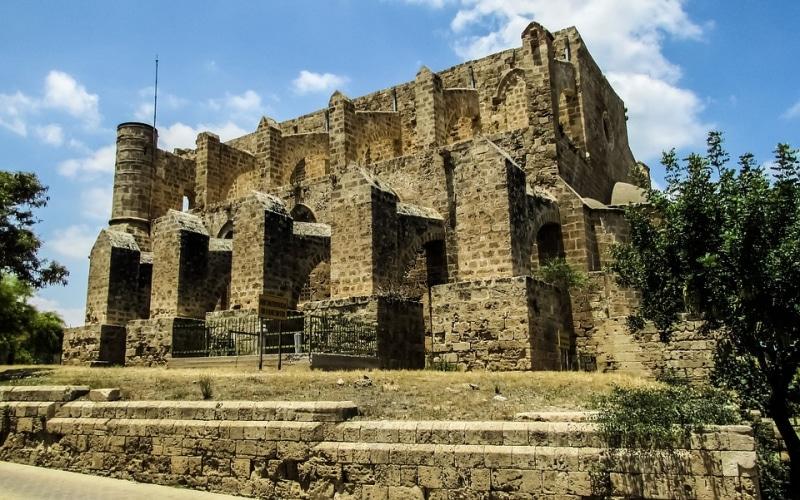
Removed from Unnamed collection
Church of St Peter and Paul 
This was originally a church built in 1359 with funds donated by a successful merchant called Simon Nostrano during the reign of Pierre I. http://www.cypnet.co.uk/ncyprus/city/famagusta/mq-sinanpasha.htm
Map
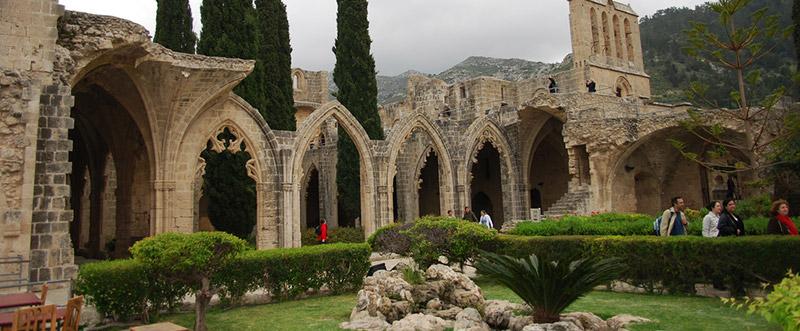
Removed from Unnamed collection
Bellapais Abbey 
Bellapais Abbey is located in the hillside, 6 miles South East of Kyrenia. The Abbey is the best example of Gothic architecture in Cyprus, as well as being ones of the finest in the Middle East. Built by the Lusignans, the first settlers in Bellapais Abbey were the Agustinas Monks, who escaped from Jerusalem in late Twelth century. http://www.kyreniacastle.com/kyrenia.php
Map
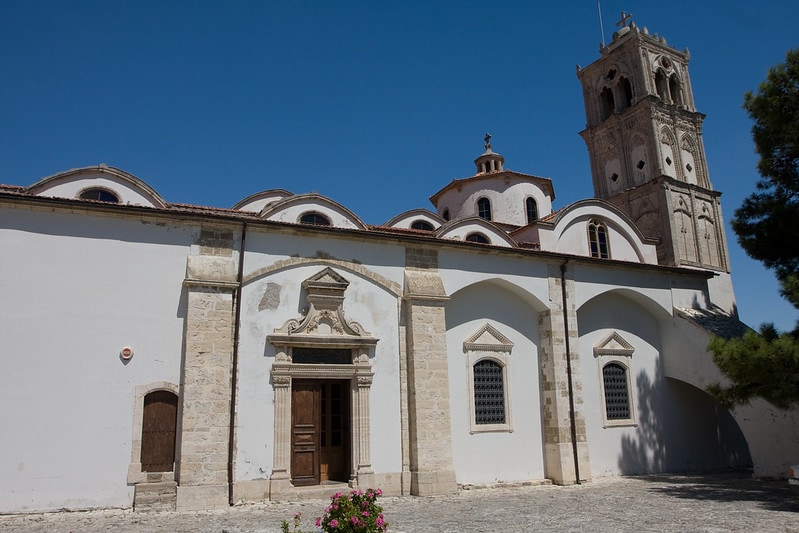
Removed from Unnamed collection
Timios Stavros Church 
The magnificent Lefkara Church is dedicated to the Holy Cross and dates back to the 14th century. According to the byzantinologist Athanasios Papageorgiou, the eastern part of the Church dates back to the 14th century, named after considering rescued frescoes behind the church’s iconostasis. This date is also confirmed by the metrical “Olivianos’ inscription”, which appears at the bottom of the Lefkara Golden Cross. There is written evidence that Olivianos was a Lefkara Bishop in 1307 during the occupation period by the Franks. This fact is also confirmed undeniably by the founder’s note on a manuscript dating back to the 14th century, which is kept in the Church’s safe. At the end of this manuscript, which is a precious Evangeliary it is noted that it was written in 1345/46 and that the monk Gabriel who was the abbot and the founder of the “Holy and Life-giver Revealed Cross” monastery paid all the expenses. In 1740 the church was restored and the wooden sculptured iconostasis was then made by the Rhodian sculptor Hadjikyriacos who was called in by the church-warden Lourentzos to this end.
n 1867 important works were carried out in the church and it was, therefore, expanded in order to have a greater congregation capacity. In 1909 common repair works in the church were deemed necessary and then the entrance was constructed as it appears today. The south door was also built. In 1953 the dome was covered with paintings. The style of the eastern part of the church is cruciform with a cupola, while the style of its more recent part is Cypriot dating back to the 19th century. Furthermore, there are six internal pillars ranged in two rows per three pillars. http://www.lefkaravillage.com/churches.html
Map

Removed from Unnamed collection
The Folk Art Museum 
The visitors of Lefkara must not fail to see the Patsalos house. It houses the Museum of Popular Art and hosts exquisite embroidery samples, some of which date back to the 19th century. http://www.lefkaravillage.com/museums.html
Map
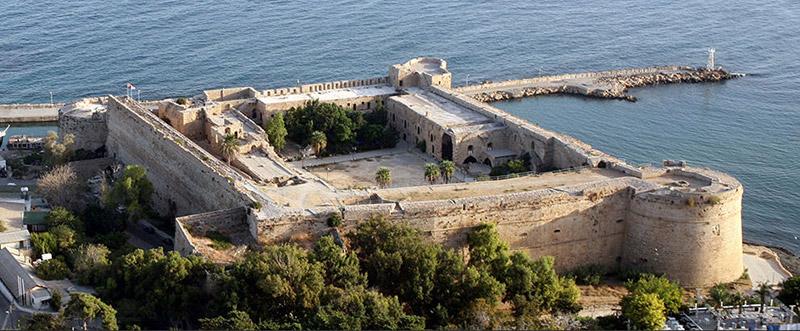
Removed from Unnamed collection
Kyrenia Castle 
Kyrenia Castle is located near the harbour, which is horse shoe shaped. It was originally built by the Romans in the Third century to defend the city, which was located up on the hillside. In the Tenth century, the Byzantines then further enhanced the shape of the castle in order to protect the people of the city from Arab pirates. http://www.kyreniacastle.com/kyrenia.php
Map
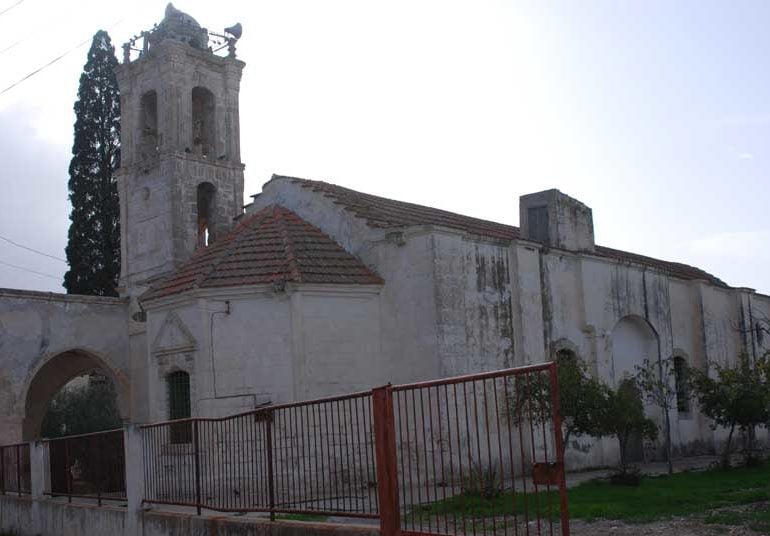
Removed from Unnamed collection
Archangelos Michael Church 
Conservation works to the Archangelos Michael Church in Turkish occupied Lefkoniko have been completed. On the October 12, a project completion ceremony of consolidation and conservation works will take place, the Technical Committee on Cultural Heritage, the European Commission and the United Nations Development Programme (UNDP) have announced.
Archangelos Michael Church was included as a conservation project among the very first priorities of the Technical Committee on Cultural Heritage in 2009 together with Arnavut Mosque in Limassol in recognition of the importance of both monuments. http://cyprus-mail.com/2017/10/11/archangelos-michael-church-project-completed/
Map

Removed from Unnamed collection
Limassol City Center 
Limassol's historical centre is located around its medieval Limassol Castle and the Old Port. Today the city spreads along the Mediterranean coast and has extended much farther than the castle and port, with its suburbs stretching along the coast to Amathus. http://www.limassoltourism.com/en/things-to-do/local-experience/nightlife/1-limassol-city-center
Map

Removed from Unnamed collection
The Limassol Castle 
The Limassol Castle is situated in the centre of old Limassol, is a remnant from the presence of Crusaders on the island. It was built in the 13th century on the site of an earlier Byzantine castle and has been converted today into the Cyprus Medieval Museum. http://www.limassoltourism.com/en/things-to-do/local-experience/nightlife/2-limassol-castle
Map
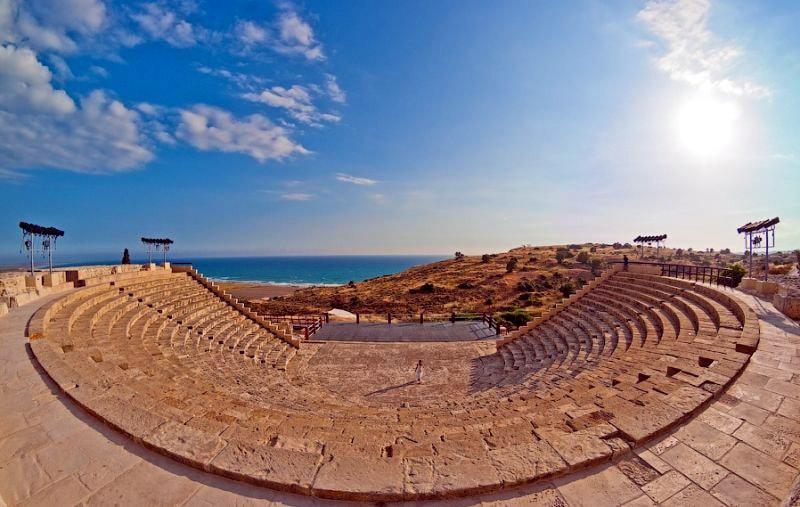
Removed from Unnamed collection
Kourion Ancient Amphitheater 
One of the most beautiful and interesting for visiting amphitheatres is located in Kourion. It will amaze travellers with its majestic appearance, the beauty of the preserved antique mosaics and the magnificent panoramic view that opens from spectators’ seats. http://www.orangesmile.com/extreme/en/operational-amphitheaters/ourion-ancient-amphitheater.htm#object-gallery
Map
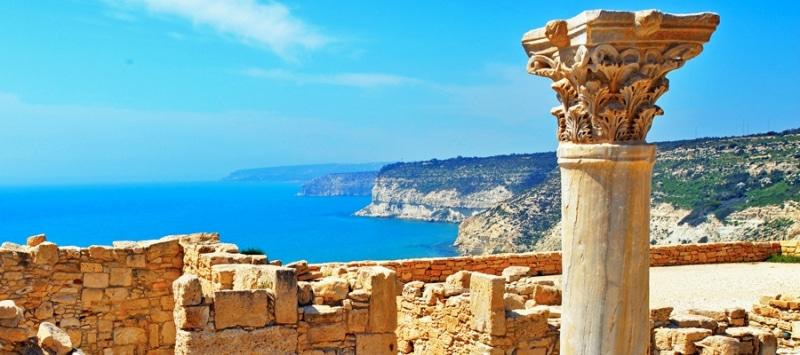
Removed from Unnamed collection
Kourion Archaeological Site 
The archaeological remains of Kourion - which was one of the island’s most important city-kingdoms in antiquity - are of the most impressive on the island, and excavations have unearthed many significant finds, which can be viewed at the site. http://www.visitcyprus.com/index.php/en/discovercyprus/rural/sites-monuments/item/2402-kourion-archaeological-site
Map
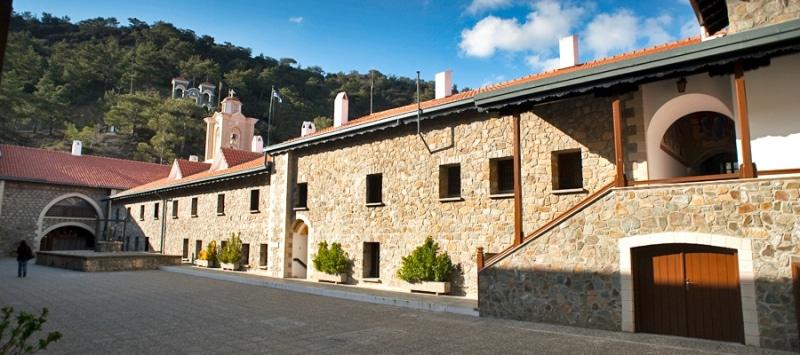
Removed from Unnamed collection
Kykkos Monastery 
Located in the mountainous region of Marathasa Valley, the Monastery of Kykkos is the wealthiest and most lavish on the island, and stands on a mountain peak, at an altitude of 1.318 metres. http://www.visitcyprus.com/index.php/en/discovercyprus/culture-religion/sites-monuments/item/263-kykkos-monastery
Map
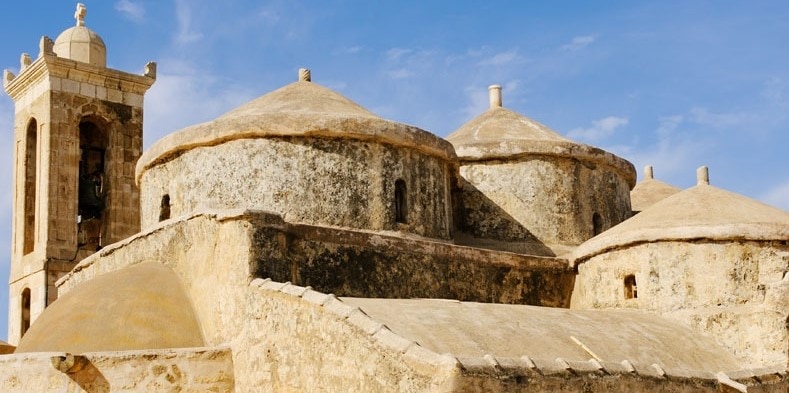
Removed from Unnamed collection
Agia Paraskevi Church 
Located in the village of Geroskipou, this interesting 9th century Byzantine church is a five-domed, three-aisled, barrel-vaulted basilica, making it one of only two such churches on the whole island, and a significant example of Byzantine architecture.
The beautiful interior wall paintings date to various periods, from the 8th-15th centuries. A monochrome reddish cross, painted directly on the stone, is of an earlier type and was revealed during restoration works. This type of cross is usually dated to the Early Christian period, up until the 8th-9th century.
Apart from its frescoes, the church also contains a rather significant portable, double-sided icon, dating to the 15th century. The Virgin Mary is depicted on one side, and the scene of the Crucifixion on the other.
According to tradition, the name Geroskipou (‘sacred garden’ in Greek) derives from the sacred gardens of the Goddess Aphrodite, which were located to the south of the village towards the sea, at the point where the ancient pilgrims began their journey to the sanctuary of Palaipafos (old Pafos). As such, the church may stand on the ruins of an ancient temple dedicated to Aphrodite, although it could also originally have been dedicated to Timios Stavros (the Holy Cross). Today, it is dedicated to the Christian martyr Agia Paraskevi. https://www.visitcyprus.com/index.php/en/discovercyprus/rural/sites-monuments/item/700-agia-paraskevi-byzantine-church-geroskipou-village
Map

Removed from Unnamed collection
Paphos Archaeological Museum 
The Pafos District Archaeological Museum houses a collection of finds from the Pafos (Paphos) region dating from the Neolithic Age to 1700 AD.
The exhibits are set across five rooms and originate mainly from Palaipafos (Kouklia), Nea Pafos (present day Pafos) and Marion-Arsinoe (Polis). They are supplemented by finds from Pegeia, Kissonerga, Lempa, Pano Arodes, Salamiou, Akourdalia, Pomos, Kidasi and Geroskipou.
The first room covers the Neolithic, Chalcolithic and Bronze Age, including coins cut from the mint of Pafos. The second room houses exhibits from the Iron Age and Classical period, including a tombstone from Marion with the Cyprosyllabic script. The third room presents the Hellenistic and Roman periods, with a rare marble bust of Aphrodite and a marble statue of Asklepios. The fourth room hosts exhibits from the late Roman and early Christian periods, while the newer fifth room showcases pieces from the Byzantine Period and the Middle Ages in general. https://www.visitcyprus.com/index.php/en/discovercyprus/culture-religion/museums-galleries/item/156-archaeological-museum-of-the-pafos-paphos-district
Map

Removed from Unnamed collection
Tombs of the Kings 
The famous ‘Tombs of the Kings’ form part of the Archaeological Park of Kato Pafos (Paphos) - one of the most important archaeological sites of Cyprus that has been included in the UNESCO World Heritage Sites list since 1980. The monumental underground tombs are carved out of solid rock and date back to the Hellenistic and Roman periods.
Rather than kings, it is actually high ranking officials and aristocracy that were buried here, but the size and splendour of the tombs – some decorated with Doric pillars - gave the locality its grand name.
Some of the tombs imitate the houses of the living, with the burial chambers opening onto a peristyle atrium. They are similar to tombs found in Alexandria, demonstrating the close relations between the two cities during the Hellenistic period. http://www.visitcyprus.com/index.php/en/discovercyprus/culture-religion/sites-monuments/item/253-tombs-of-the-kings
Map

Removed from Unnamed collection
Archaeological Park of Kato Pafos 
The Archaeological Park of Kato Pafos (Paphos) is one of the most important archaeological sites of Cyprus and has been included in the UNESCO World Heritage Sites list since 1980.
Nicocles, the last King of Palaipafos moved the city from the previous location to its present location near the harbour at the end of the 4th century BC. Between the 2nd century BC and 4th century AD, Pafos was the capital city of Cyprus.
The Park includes sites and monuments from the 4th century BC to the Middle Ages, while most remains date to the Roman period. The intricate mosaic floors of four Roman villas (the houses of Dionysos, Theseus, Aion and Orpheus) form the impressive epicentre of the finds, and depict various scenes from Greek Mythology. The complex also includes other important monuments, such as the Asklepieion, the Odeon, the Agora, the Saranta Kolones (Forty Columns) Castle, the Limeniotissa ruins of an Early Christian Basilica, and the Tombs of the Kings. http://www.visitcyprus.com/index.php/en/discovercyprus/culture-religion/sites-monuments/item/239-archaeological-park-of-kato-pafos-paphos
Map
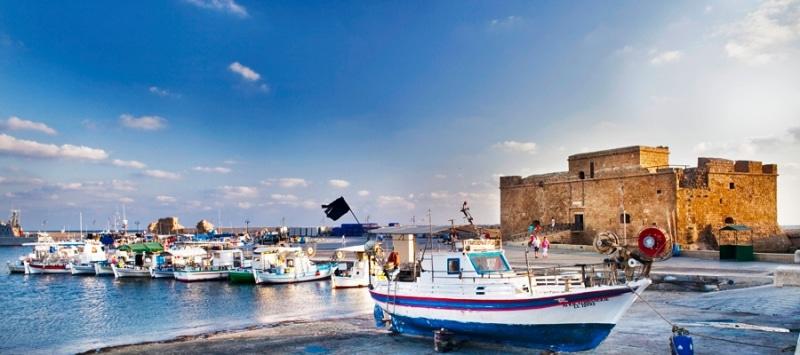
Removed from Unnamed collection
Paphos Castle 
Standing grandly at the west end of the town’s harbour, Pafos (Paphos) Castle (Medieval Fort) was originally a Byzantine fort built to protect the harbour, and was rebuilt by the Lusignans in the 13th century, but then dismantled by the Venetians. The Ottomans rebuilt it in the 16th century when they conquered the island. What survives today is the 1592 Ottoman restoration of the western Frankish tower with its Venetian additions. An inscription above the only entrance of the castle bears witness to this restoration.
The main part of the castle is a big square tower that has an enclosed courtyard in the middle. The ground floor consists of a central hall with small rooms on each of its two long sides, which were used as prison cells during Ottoman Rule. There are 12 battlements on the roof, which received a corresponding number of cannons. The Ottomans removed the cannons in 1878, when they handed over the administration of the island to the British, who used the castle as a salt store until 1935, when it was declared an Ancient Monument under the Antiquities Law. http://www.visitcyprus.com/index.php/en/discovercyprus/culture-religion/sites-monuments/item/245-pafos-paphos-castle
Map

Removed from Unnamed collection
Medieval Castle of Paphos 
As you eat or walk along the seafront, you will enjoy the view of the medieval castle that adorns the port of Pafos. Pafos Castle was originally a Byzantine fortress, built in 965 AD for the protection of the port. It was completely destroyed by an earthquake in 1222 AD. The castle was rebuilt by the Lusignans around the end of the 12th century to replace the fort of "Forty Columns" for the defence of the island, especially during the Medieval Period (1192-1489). It was destroyed shortly before 1570 by the Venetians, to stop it from being used by the Ottoman Turks, whose invasion of Cyprus was expected. The Turks did indeed invade the island and restored the castle in 1592. They even strengthened it with new fortifications as stated in a Turkish inscription above the entrance. The ground floor consists of a central hall which opened to several small spaces. Under Turkish rule, these were used as prisons.
Pafos (Paphos) Castle served as a fortress, as a prison and also as a salt storage area during the period in which the island was a British colony. In 1935 it was declared an ancient monument. https://www.cyprusalive.com/en/medieval-castle-of-paphos-pafos
Map

Removed from Unnamed collection
Alanya Castle 
One of the symbols of Alanya – the Alanya castle over the rocky peninsula in the middle of the city. The fortress that you can see today is a remain of 13th century Seljuk fortress built after the conquest of Alanya in 1220 by Alaeddin Keykubat I.
However, the very first fortifications have most probably been built by pirates occupying the peninsula in 3rd century BC and later replaced and improved into Byzantine and Roman fortifications over the centuries. The latest Seljuk Alanya castle is app. 250m over the sea level and its walls have great 6,5km in length. There used to be 140 towers along the walls and around 400 cisterns in the castle.
The fortifications formed three separated divisions – one for the sultan and his family, one for the army and one for the ordinary people. During the Ottoman era, the Alanya castle was used only for defensive purposes and there were many private villas built within the fortress in the 19th century. http://www.visitalanya.com/discover-alanya-castle/
Map

Removed from Unnamed collection
Herbarium Museum 
Herbarium museum has been opened in Alanya in 2012 by Alanya municipality.
There are 151 plants and 90 different insects. http://www.visitalanya.com/my-posts/herbarium-museum-alanya/
Map
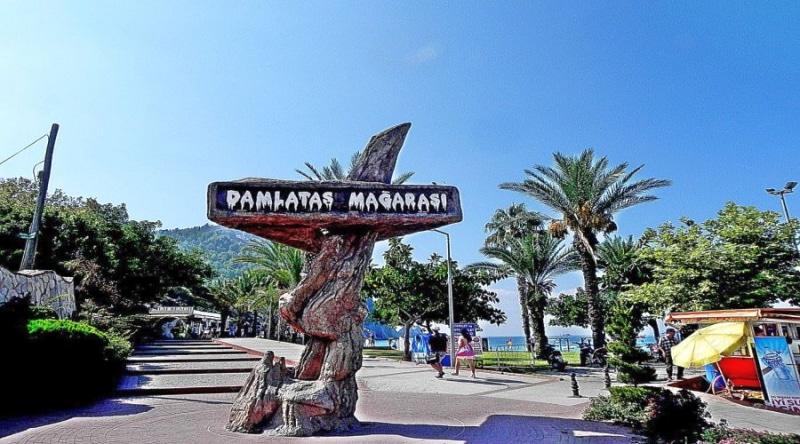
Removed from Unnamed collection
Damlatas Cave 
It was found in 1948 by accidantelly while getting stones for Alanya harbour. After that opned for public.It is one of the first cave which was opened for touristic reason in Turkey. http://www.visitalanya.com/damlatas-cave/
Map

Removed from Unnamed collection
Alanya Archaeological Museum 
Museum has been opened in 1967.
Museum opened as archeological and ethnography museum. But after the Atatürk house and museum designing, the museum became Alanya Archaeological Museum at 2010 . http://www.visitalanya.com/my-posts/alanya-archaeological-museum/
Map
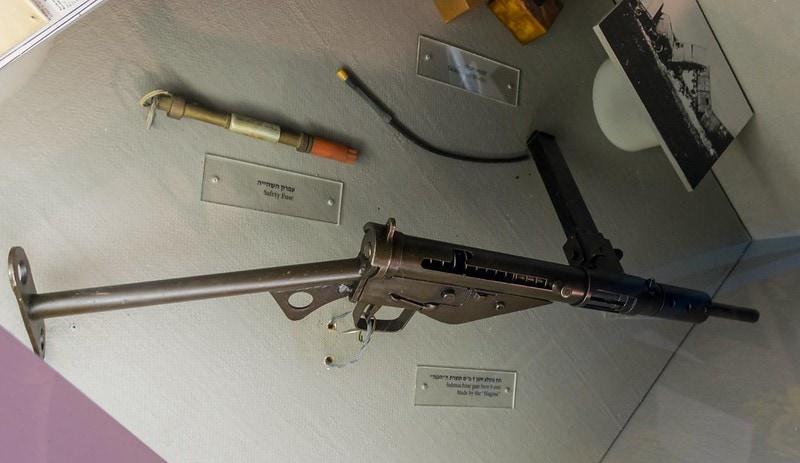
Removed from Unnamed collection
Clandestine Immigration and Navy Museum 
Just above the Bat Galim Promenade, at the foot of Mount Carmel in the city of Haifa, is the Clandestine Immigration and Navy Museum. A large museum with many hands-on exhibits including two retired ships and a submarine on display and open for exploring, the museum is operated by the Israeli Navy and Ministry of Defence so don’t be surprised to find the front door locked – the guards will open it for you and ask for identification. Once inside, a short video presentation is shown giving a brief overview of the Israeli Navy’s history and then the large collection of both clandestine immigration and naval maps, photographs, articles and souvenirs can be browsed. Also, for those interested, a database of war medal and decoration recipients is available behind the guard’s booth.
n the main room, the “History of the Navy” exhibit, learn about the Battle of Tel Aviv where the Israeli Navy’s first warship, the INS Eilat – originally a icebreaker for the Canadian Navy and then the US Coast Guard, intercepted a group of Egyptian ships in June 1948 with just a few machine guns and a dummy wood cannon. Read about Operation “Pirate” and the 1953 Assistance to Greek Earthquake Victims exhibit, with a life-size dummy dressed in a 1950s commando diving suit completed with weaponry. Look at the pictures of Squadron 788 and their twenty-year stint as guardians of the Sea of Galilee – constantly under fire from Syrian MiG fighter jets and artillery. Learn the amazing story of the capturing of the Egyptian warship Ibrahim El Awell by the Israeli Navy and how it was turned into the INS Haifa. Be mystified at the tale of the Israeli Naval submarine INS Dakar and its disappearance in the Mediterranean Sea in 1968, only to be found in 1999 with the help of the US Navy and modern technology. https://www.touristisrael.com/clandestine-immigration-and-navy-museum-haifa/5072/
Map

Removed from Unnamed collection
Haifa City Museum 
The Haifa City Museum is located in the Haifa’s German Colony, at the foot of the famous Baha’i Gardens. Celebrating Haifa’s rich cinematic past, the museum was created within an old Templar Community House originally built in 1869 and recently restored in 2000. Within the museum’s old walls visitors can be taken back to the the age of the silver screen and the years that followed. The Haifa City Museum can be enjoyed by anyone, from film buffs to wide-eyed toddlers with no understanding of the cinematic legends such as Clark Gable, Alfred Hitchcock and Marilyn Monroe.
With full blueprints of Haifa’s historical movie-houses, letters on official movie-house letterheads and even opening night invitations in “The Palaces of Haifa” exhibition, you too can be transported back to the time where glamour and fame cycled around the movie industry. A special curtained-off area of the museum’s first floor holds a screen and projector where you can sit and watch old film trailers and old Israeli pre-movie advertisements. Also on display are old film reels and a photo collection donated by a local resident featuring Hollywood’s stars of yesteryear such as Gregory Peck, James Stewart and Marlene Dietrich. Largely featured in the Armon Theatre which was established in the Haifa’s Downtown area, not far from the German Colony, in the year 1935. The original theatre had 1800 seats and an electric removable roof for pleasant summer evenings. On opening night, the Armon Theatre showed “The Merry Widow”, an Oscar-winning musical comedy. The theatre met its demise with its closing in the late 80s and was eventually torn down. https://www.touristisrael.com/haifa-city-museum/5537/
Map

Removed from Unnamed collection
Haifa's German Colony 
Haifa’s German Colony is probably the culture and tourism centre of this beautiful city. Located just beneath the Bahai Gardens, Haifa’s largest tourist attraction, the German Colony has been beautifully restored in recent years and is now lined with trendy cafes, restaurants, and boutiques. A visit to Haifa is not complete without exploring the German Colony, and those who do visit take away great memories. A visit is definitely one of THE things to do in Haifa.
The German Colony of Haifa is a small area located at the foot of the Baha’i Gardens and reaching the Port of Haifa. It was founded in the late 1860s by German Templars (not to be confused with the Templar Knights of the Crusaders who also settled in Northern Israel) and throughout the two world wars in the early 21st century was inhabited on-and-off by the German Protestants who built the area up.
Today, Ben Gurion Avenue, the main road in the German Colony, is lined with distinct red-roofed cafés, restaurants and boutiques. Tourists flock to the German Colony for relaxation, culinary experiences and even the nightlife. In the German Colony, close to the port, is Haifa’s City Museum as well as the old City Center, a small mall. For those wishing to stay in the German Colony, the Colony Hotel Haifa can be found on Ben Gurion Avenue just minutes away from the Baha’i Gardens. https://www.touristisrael.com/haifas-german-colony/4998/
Map

Removed from Unnamed collection
Bahai Gardens 
The Bahai Gardens is possibly the most distinct tourist attraction in all of Haifa, and is very likely the most visited. Every year, hundreds of thousands of tourists and locals alike travel to the Bahai Gardens on Mount Carmel in Haifa, the most holy site of the Bahai faith. Last year alone, 750,000 people enjoyed the beautiful terraces of the Bahai Gardens, a UNESCO World Heritage Site.
The Bahai Gardens contains nine concentric circles each filled with flowers, small trees, small sculptures, water fountains and pools. To the sides of the gardens are wooded areas designed to house wildlife and to cut down on urban noise. The 200,000 square metres of land were designed by Iranian architect Fariborz Sahba funded by donations made only by Bahais, the world over. https://www.touristisrael.com/bahai-gardens-in-haifa/2293/
Map

Removed from Unnamed collection
Madatech National Science, Technology and Space Museum 
The Madatech National Science, Technology and Space Museum in Haifa, is a large museum crammed with hands-on activities that will please both adults and children. Not far from the Bahai Gardens, in the Hadar neighbourhood of Haifa, the museum is housed in the large edifice which is the old Technion building. The Madatech building was built in the early 1910s, visited by Albert Einstein in 1923 and then made into a museum in 1984. Today the museum hosts some 200,000 visitors annually, many of them children on school trips.
The Madatech National Science, Technology and Space Museum can be broken up into five parts for mapping out. The ground floor of the main building contains the front desk, a café, a children’s play area, a gift store and several exhibits such as the history of the printing press and The Road to Safety Exhibition. In the Road to Safety Exhibition children and adults can sit side-by-side on crash simulator, operated only by a museum guide, which proves the need for seatbelts while driving. Be prepared, the crash is quite a jolt! Continuing up a narrow staircase (elevators are also on-site), the first floor comes to view. On the first floor are exhibitions such as the Natural Science Room with over 100 stuffed animals and birds all found in the Haifa area including eagles, mongooses and jungle cats. Other exhibitions include Puzzles & Games, Green Energy and Acoustics & Waves, all going into depths with hands-on displays and tools for everybody to benefit from. In the Green Energy exhibition children can learn about combustion, solar power and light power, many of the displays featuring little lights that illuminate with the power generated at the display. Children can also race sailboats on a table with fans, mapping out wind currents with guided lines on the table. Also on the first floor is the Einstein Hall where an exhibition was made in honour of Ilan Ramon, Israel’s first and only astronaut. Included in the exhibit are some of his personal belongings found at the crash site of the Columbia space shuttle that tragically crashed on descent over Texas. https://www.touristisrael.com/madatech-science-technology-museum-haifa/5294/
Map
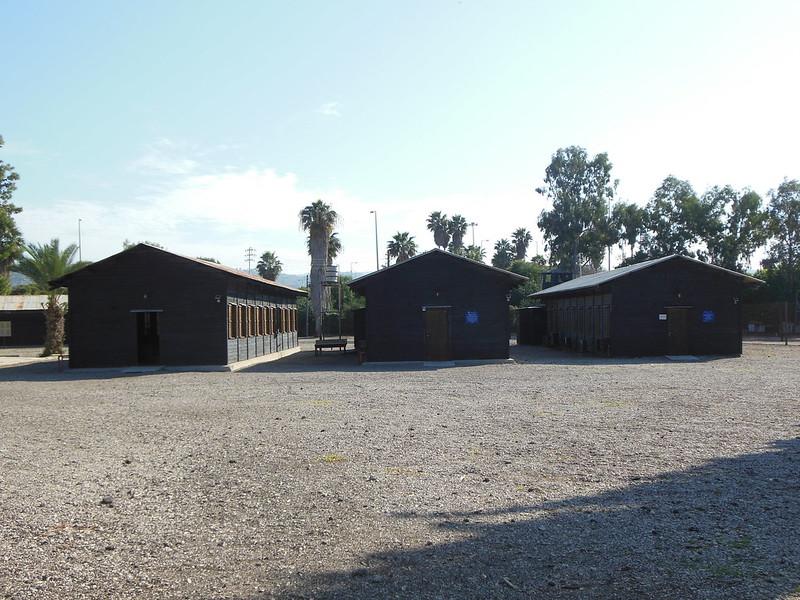
Removed from Unnamed collection
Atlit Detainee Camp 
The Atlit Detainee Camp Museum is located in Atlit, a small town located on the northern coast about 20 kilometers south of Haifa. In the 1930s and 40s, this site served as a detention center for illegal Jewish immigrants seeking refuge in Palestine (which is now the State of Israel). The land was under British Mandate and officials let very few Jewish people into the country legally. Tens of thousands of Jewish people were interned here during this time period. Although first-time visitors may not be familiar with this museum, it is very significant site in the history of Israel.
Illegal immigrants are known as “ma’apilim”. Before and during World War II, thousands of Jewish people were fleeing their homes trying to escape persecution and concentration camps. Many coming from Europe and northern Africa chose to seek refuge in Palestine, which was under British Mandate. More than 122,000 people came to Israel despite the blockade. https://www.touristisrael.com/atlit-detainee-camp-museum/16177/
Map



